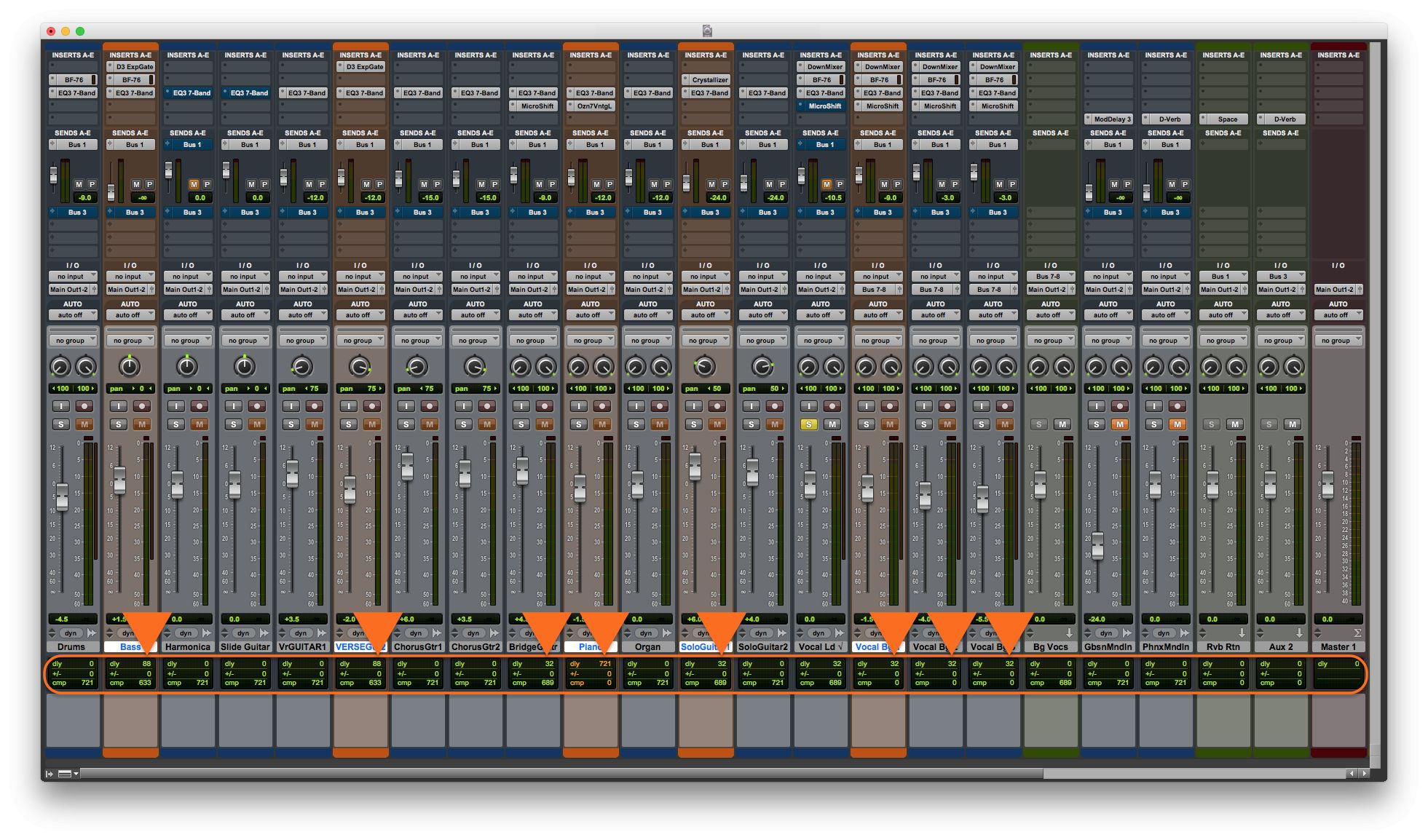First off: For any normal playback situation, it is completely irrelevant whether we call the most latent tracks "played early" or the least latent tracks "delayed". It simply doesn't matter (and quite obviously, nobody is talking about "negative time" or whatever.
Fact is: When you press start, the most latent tracks get played first. No way around it.
As said, for plain playback, it doesn't matter how we call it.
Things get fundamentally different once live tracks are involved.
So:
3. Monitored tracks are processed in a different thread and are not subject to any impacts of latent plugins, unless the monitor track(s) feed into a buss that has those latent plugins on it.
They are not only processed, but sometimes you also want to record them.
Let's for now assume 0 would be the point on out time axis where our recording is supposed to start (and hence be placed at, once done).
Oh whoopsie, there's a plugin inserted on another track, introducing a latency of 12ms. Ok, let's place our recording at 0 +12ms. Oh noooo, before we track our next take, another plugin was inserted on another track, this time introducing 23ms of latency - hmpf, now our recording needs to be placed at 0 +23ms.
You can easily see where this is going, can you? Each time we record something, it needs to be checked whether there's another latency introducing plugin somewhere.
If however the latent track in question was started earlier (in relation to 0 - and btw, 0 is *never* representing the moment when we press start anyway, that's always happening earlier due to some pre-roll happening), that's the only calculation that had to be done. Quite easier in my book.
But hey, the story continues.
If what you were saying was true, you couldn't send a live track to, say, the same delay bus as a latent track that has to be compensated. Or rather, if that was happening, the delay would be out of time for one of the sources. Correct?
But that doesn't happen.
The reason being that the latent track is played early. Which is solving all issues instantly. If the delay bus would have to be delayed (which it would have to be, following your assumptions), how could the delay be in time with my live playing?
But hey, I'm sure you have yet another explanation of how that delay bus scenario would work.

